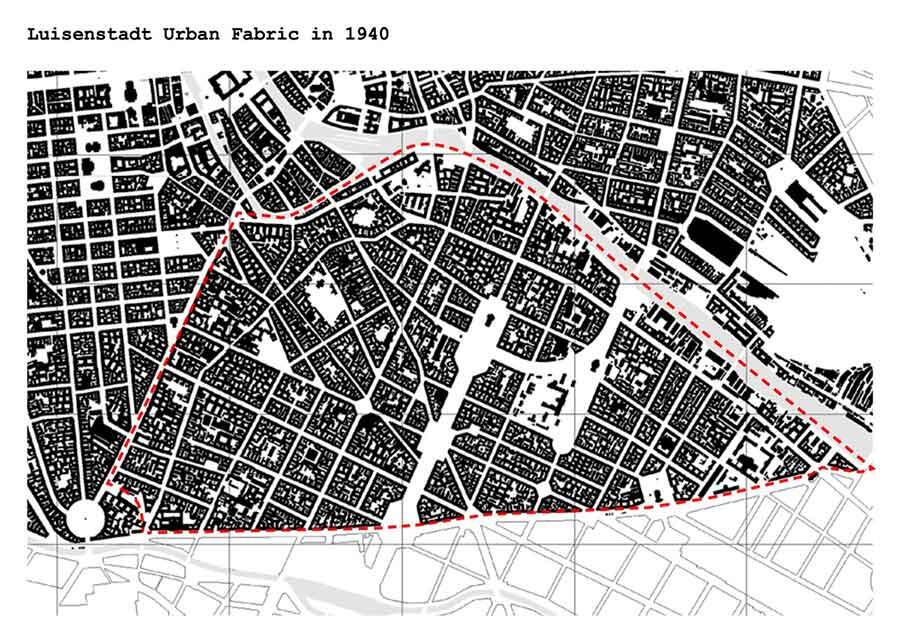
Instructor:
Course: Reconceptualizing the Urban: Berlin as Laboratory
Students: Xiang Chang
The Luisenstadt area is bounded by the river Spree in the north and east, Skalitzer Straße the south, and Lindenstraße in the west. The area was a working-class district with intensively mixed residential and light industry land use. It still carries traces of war damage and years of urban development in the former border area. The urban fabric of Luisenstadt is dominated by new buildings, renovated old buildings, and upgraded open spaces.
During the Second World War, tons of bombs had been dropped onto Berlin. 35 percent of all homes were totally destroyed. Located in the inner city of Berlin, the Luisenstadt suffered the most severe damage. In 1945, the neighborhood was in rubble, and many voids were left over after destroyed buildings. The comparison between figure-ground diagrams in 1940 and 1950s indicates the severe damage during the war.
After the division of the city, both West and East Berlin were converted into a display window. It made Luisenstadt district a zone of conflict and division. The housing had become of great importance: both in order to improve the living conditions of the residents, and to display the power of East and West Berlin.
This research studies the development of the urban fabric and block footprint along the Berlin Wall, showcasing the urban renewal in the Luisenstadt area which encompasses both West Berlin and East Berlin. It covers the most representative projects built along the Berlin Wall during the cold war: Neanderviertel and Heinrich-Heine-Viertel in East Berlin and Otto-Suhr-Siedlung and Spring Project in West Berlin. During the 1970s, “ Careful Urban Renewal” strategy was developed as a strategy of response to the socio-spatil complexity of the area. To celebrate the 750th anniversary of the founding of Berlin, the International Building Exhibition (IBA) initiated in 1979, was completed in 1987. This research selects Block 79 and Block 104 as cases to elaborate the “careful urban renewal” concept as it came to be executed in Luisenstadt.














